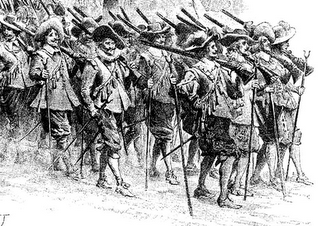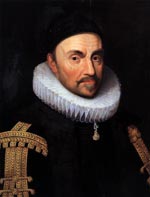
80 Years War Summary - The Dutch Revolt

When the 17th century came about, Spain had a glorious century behind and a lot of enemies ahead.
After solving most of its problems through war, the country was as bankrupt as it was bound by numerous pacts and alliances between the countries around it. This meant that it had little capability of reacting to future problems. The first and most obvious example of this was the Dutch Revolt - the uprising of the Spanish colonies in the Netherlands, who rejected to be ruled by a king who answered only to the Spanish classes and not to their needs.
Hence, an ideological movement began to form in mid-17th century. Calvinism (a Dutch iteration of protestantism) became the preferred belief of those territories, and they soon got restless at the lack of political and religious reforms that would make their leaders reflect their faith.
Rebellions soon started to spread shyly through Dutch territory. They refused to recognize the Governess that Spain had chosen for them, the somewhat tolerant Margaret of Parma. Even though none of those revolts were victorious, Spain decided to name a new governor, the harsher Fernando Alvarez de Toledo, the 3d Duke of Alba. He ordered the execution of about 3,000 rebels and made everyone from both sides a little bit more radical than before.
William the Silent

He had a powerful enemy in a landowner called William the Silent. He owned more Dutch land than anyone else after King Philip II. He refused to swear by the Duke's oath of allegiance -- a common imposition among many nobles back then. What was more outrageous, he refused to side with anyone at all. He was neither a rebel nor a monarch (hence the apt nickname of The Silent), so he he could not be trusted, but he ended up becoming one of the leaders of the Dutch Revolt anyway.
The Duke decided to force some ideology out of him and arrested his son, who was studying in Leuven, Belgium. William the Silent fled the country and swore revenge against the Spanish territories. He staged up to three raids. He became an icon of the rebellion and soon all the rebels followed him.
William the Silent then turned the rebellion into an all-out war. Under his direction, the now-organized army won several territories and brought the Spanish to a stalemate in Holland. He was so essential to the cause that after his inevitable assassination, many rebels decided to flee the country and seek better pastures elsewhere. After a few decades of triumph, the rebellion was back on the verge of being crushed.
They were lucky to be assisted by the Queen of England. Not because her help did much for their desperate situation, but because it angered King Philip so much he focused all of his resources in the Spanish Armada and its ill-fated invasion of England. He went into bankruptcy after that and had no means left to efficiently strike the rebels.
Bankruptcy and other Wars
The Spanish were now fighting in the defensive and losing territories. The north of the Rhine was practically all Dutch now. Nearby France, was thoroughly irritated by all the noise and declared war on Spain as well.
Now that the war was being waged on Northern France as well, Spain had less reservations to cede territories to the Dutch -- they ceded the Spanish Netherlands and a truce was signed between the Dutch, the French and the Spanish, the Pax Hispanica now also known as Twelve Years' Truce
It wasn't a long-lived truce. During this rest, Spain regained some muscle and after a while decided to strike again. In 1622, the succession of conquests and sieges on different Dutch cities started again. However, the ex rebels had gained some strength as an independent nation and with their new military could pose a bigger problem to Spain's underpaid troops.
But there were still many troops remaining. King Philip created a second Armada of 20,000 men to defeat his enemies. It wasn't any more successful than its predecessor. New wars broke out in Spanish territory (Portugal and Catalonia) so Spain lost some of its interest in the Netherlands. After years of symbolic fighting, in 1648, the 80-year the Dutch achieved the victory, not only effectively ending the Dutch revolt but putting an end to Spanish immersion in Dutch territories.
